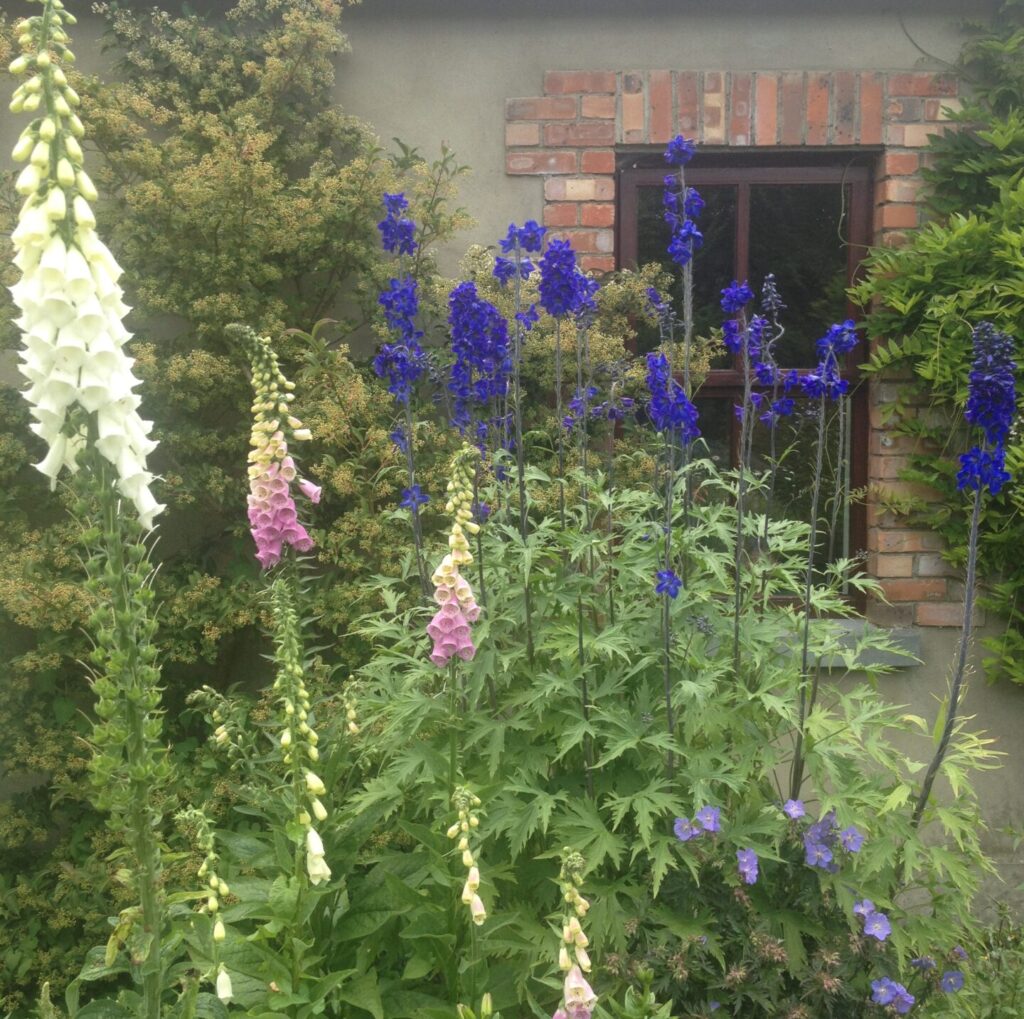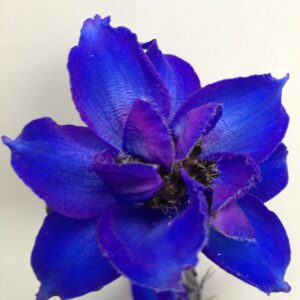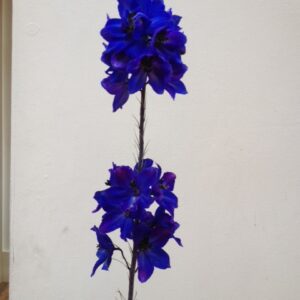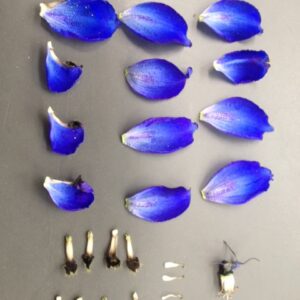Brendan Sayers provides an account of a wonderful Delphinium of Irish origin:

Delphinium ‘Weeshy’s Blue’ [pronounced wish she] arose as a seedling sown by Anthony Aloysius Doherty at Pretty See Cottage in County Meath approximately 10 years ago. It grew among other delphinum seedlings and it was not until it was a mature clump that its uniqueness was spotted. The cultivar is best noted for its mutant qualities, evident in the uppermost flower being an amalgamation of many flowers and the flowerless gaps on the inflorescence. The cultivar name is derived from the violet blue flowers and the diminutive of the middle name of its originator.
The plant first flowers in late May and early June at a height of approximately 2 metres. The branched inflorescence is approximately 80 cm tall and the flower colour is predominantly violet for the buds and outer sections of petals and violet blue for the central part of the petals (Violet group 86A and Violet-Blue 95A; RHS colour chart 1966).
The mutation is technically termed Peloria, defined by the Merriman-Webster dictionary as ‘a normal, often hereditary regularity of structure occurring in normally irregular flowers’.
One of the most commonly encountered peloric flowered plants of our gardens is Digitalis purpurea, the foxglove, where the terminal flower is cup-shaped, more reminiscent of a Campanula or bell flower. Seedlings of D. ‘Weeshy’s Blue’ exhibit the peloric nature of their parent.
As mentioned, Delphinium ‘Weeshy’s Blue’ is noteworthy in having gaps (up to 8cm long) in the inflorescence, devoid of flowers but still possessing the floral bracts. Furthermore, some of the flowers lack the spur found on normal delphinium flowers. The second flush of flowers produced in late summer may lack any evidence of mutation.
Delphinium ‘Weeshy’s Blue’ may not be everyone’s first choice for a border, but its unusual form and captivating violet blue flowers makes it attractive and unique. It must be propagated vegetatively, by simple division of the root stock or by basal cuttings in spring and from the second spurt of growth in late summer. If propagating from cuttings, the cuttings should be taken from the plant when the stems are approximately 8cm tall and before they have become hollow.
Brendan Sayers
From IGPS Newsletter Issue 160 (January 2024).
*Click on the photographs below to enlarge them and read captions*




